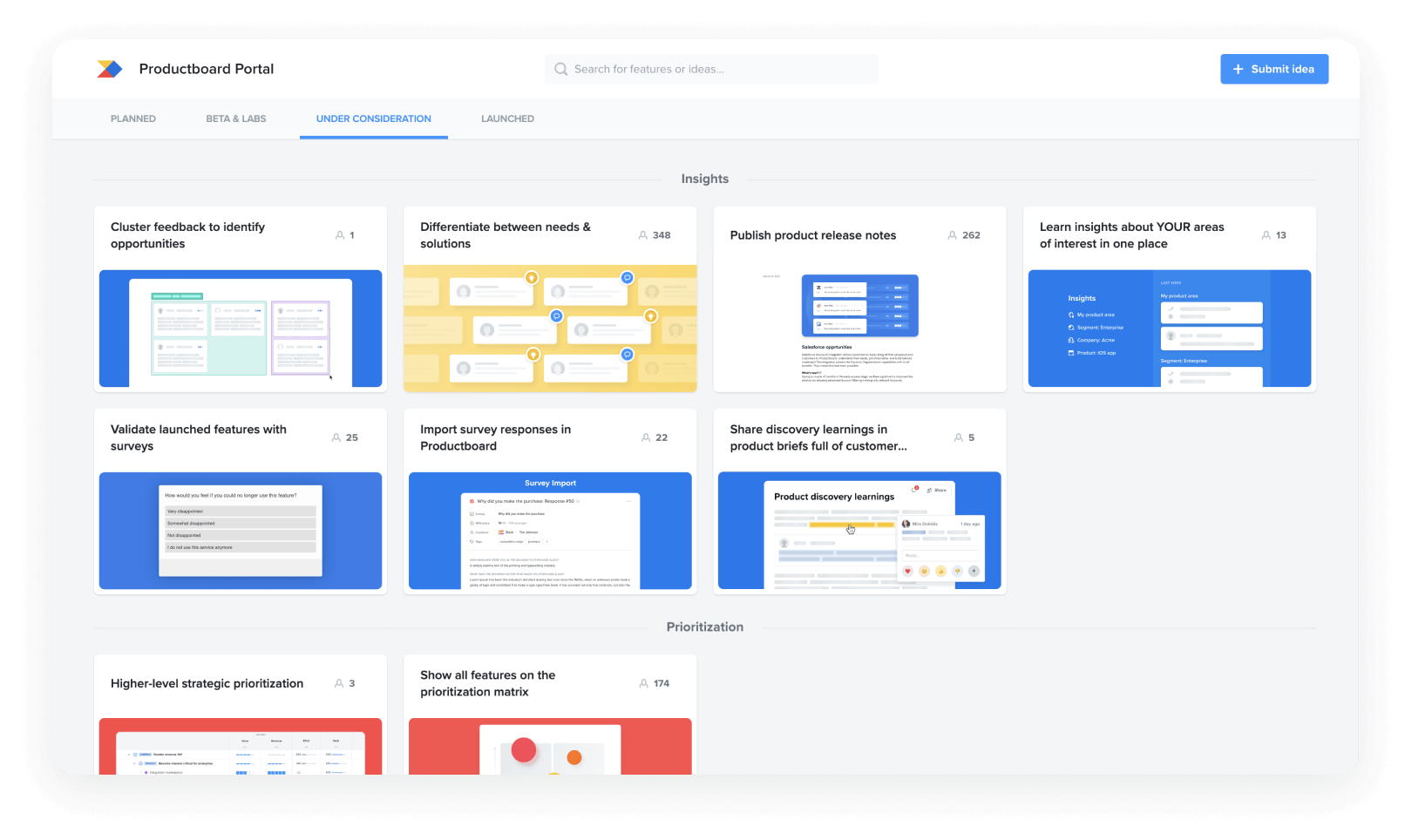Don’t let these 6 product nightmares terrorize you — Productboard is here to help

See how Productboard helps product teams overcome product nightmares
A special thanks to Dean Peters and the 280 Group for collaborating with us on this project!
You wake up with a start. Your heart is racing. Your legs feel like jelly. Just a moment ago you were being chased by a HiPPO (Highest Paid Person’s Opinion). Or was it the Feature From the Backlog Lagoon? Or a swarm of bugs? Whatever it was, it made you want to scream. But as you blink your eyes open, you begin to realize that it was just a nightmare.
We’ve all been there. Product nightmares feel all too real while we’re experiencing them. That’s why we’ve put together this guide to help you understand — and overcome — the most common product nightmares.
The nightmare: The Feature from the Backlog Lagoon
Many product organizations have the bad habit of saying yes to all feature requests coming in from customers and across the organization. Even if you never plan to follow through, you simply toss these requests into a toxic dumping ground — an oozing product backlog lagoon. And one day, someone (usually a big-ticket customer) appears to collect on that promise.
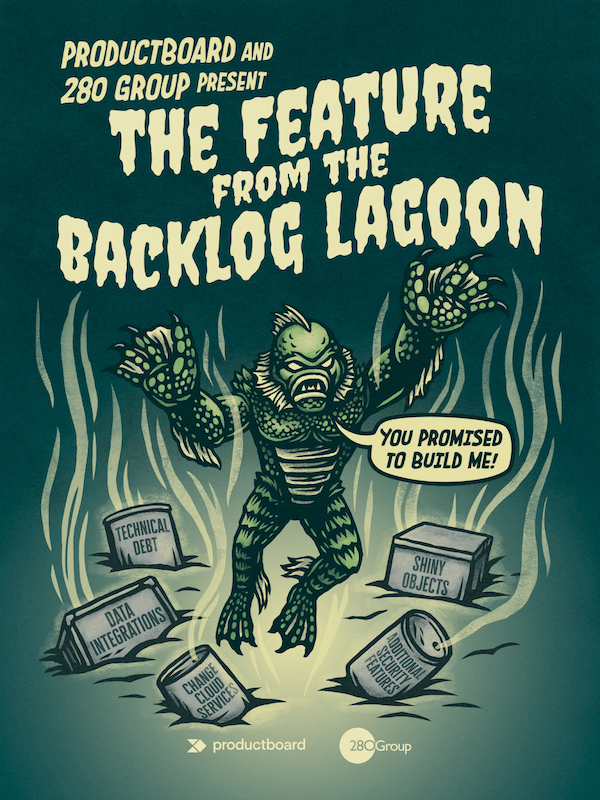
How to wake yourself up
You can combat the Feature from the Backlog Lagoon by having good backlog hygiene (including backlog grooming). This means you need to keep your backlog organized and coherent — don’t let it turn into a junk drawer where you toss anything you don’t want to deal with. Only add ideas and requests to the backlog when there’s a chance you will return to them in the future.
How do you do this? It helps to create a hierarchy for all your feature ideas. This makes them easy to sort by importance. Within Productboard, you have the ability to organize your products and features into components and subcomponents. You can set these up in terms of user needs (jobs to be done) or by product area. Get more tips and best practices about using the Productboard hierarchy feature here.
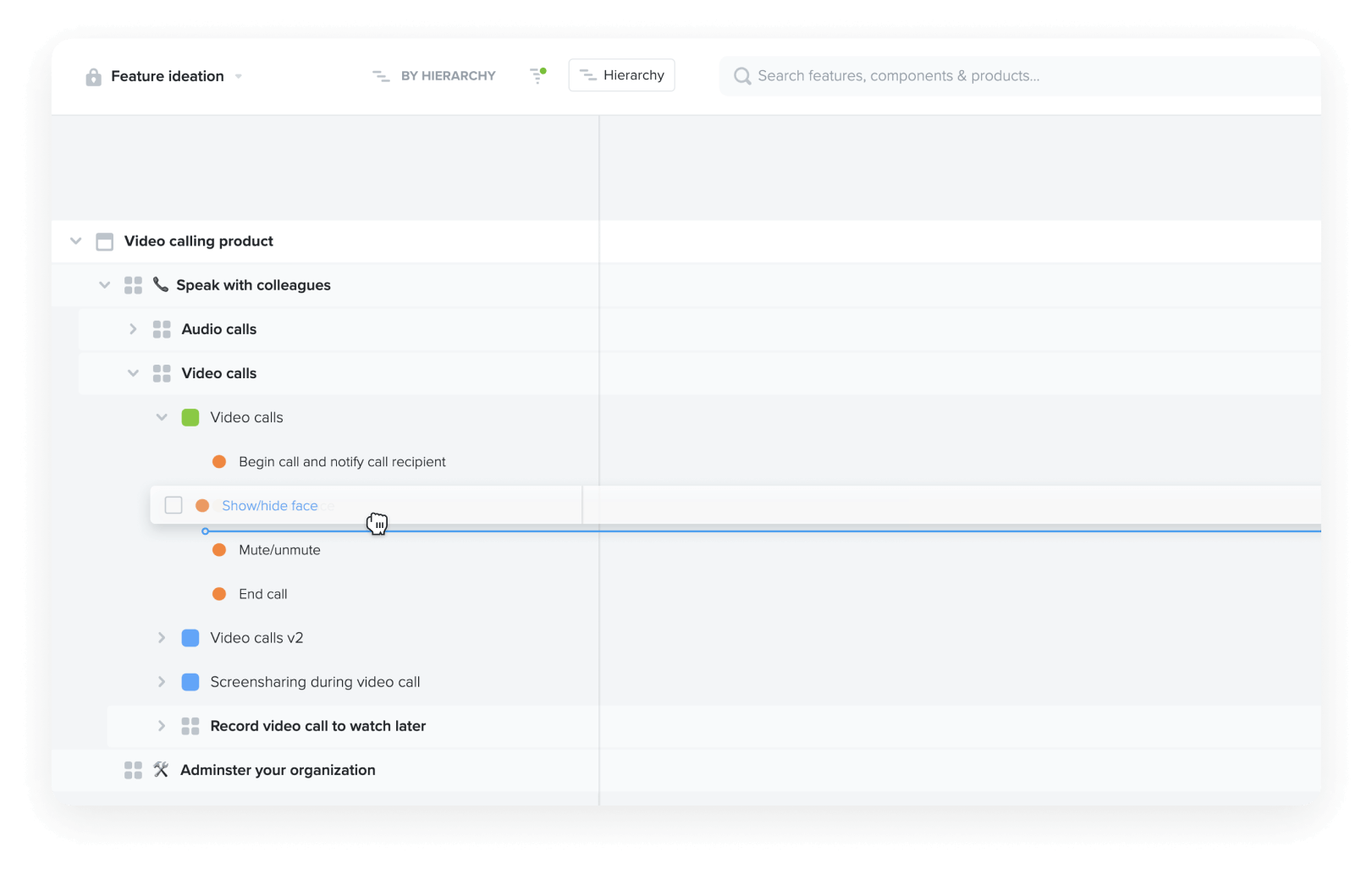 Your Productboard feature hierarchy is like a filing cabinet for all your feature ideas, big and small.
Your Productboard feature hierarchy is like a filing cabinet for all your feature ideas, big and small.
The Feature from the Backlog Lagoon is a monster that thrives in darkness and neglect. Make sure you periodically shine a light on your backlog to clean it up, practice good product backlog management, and tend to anything that’s at risk of being forgotten.
And finally, you can prevent the Feature from the Backlog Lagoon from surfacing by being more transparent about your decision-making process. Using a feature like Productboard’s Portal allows you to share which feature requests you’re moving forward with — and why — with all your stakeholders, which helps you avoid those scary situations when someone who submitted an idea a year ago suddenly comes to collect.
You can share a Product Portal with colleagues and customers to collect votes & feedback on your ideas
The nightmare: Escape from the Feature Factory
In a Feature Factory (a term coined by product thought leader John Cutler), product orgs are trapped in a dystopian, output-focused culture. This addiction to activities leaves teams without an understanding of the actual impact of their work.
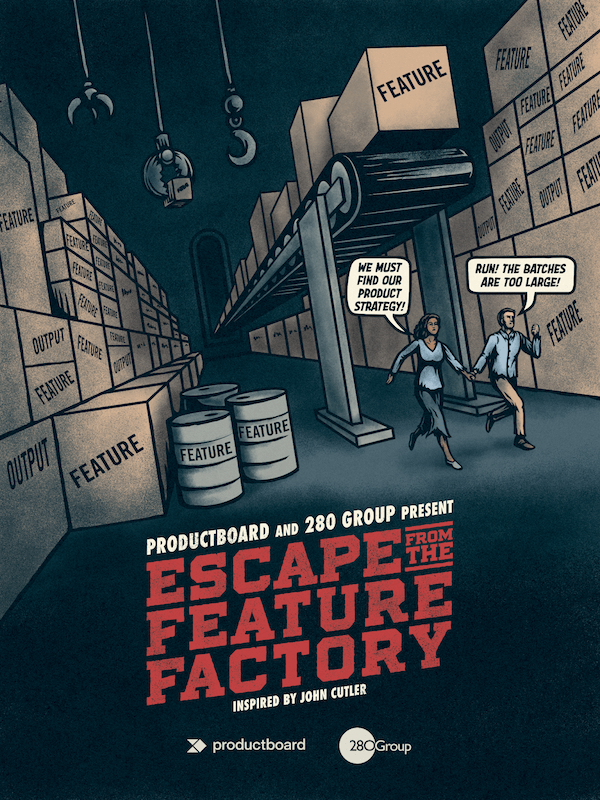
How to wake yourself up
Customers, engineers, and other stakeholders will often focus on solutions, so it’s easy to end up simply trying to build features based on their requests. One of your biggest tasks (and one of the best ways to vanquish the Feature Factory) is to reframe these conversations to identify the underlying cause and move into the problem space. Shift your focus from outputs to outcomes and train management to coach teams to think about the long-term value of their work.
Continuous discovery is a tool to help you to avoid living the Feature Factory nightmare. This approach involves collecting feedback from your users on a regular basis, both to identify their underlying problems and to ensure that you’re building solutions that actually address them. During conversations, use tactics like the five whys to get beyond feature requests at face value. Hold regular retrospectives to identify areas for improvement and make adjustments to the process as needed.
Use these tactics in tandem with a tool like Productboard’s Insights board, which allows you to focus on core user problems and see recurring trends. Productboard can help you streamline and structure your discovery activities in other ways, including your product discovery process.
The nightmare: Night of the Living Bugs
When product owners inherit backlogs and products where technical debt has been swept under the carpet, the unsuspecting and newly arrived product owner can accidentally open a Pandora’s Box of painful, wasteful, and non-functional requirements and faulty code. These pests are all too eager to devour your carefully planned product strategy framework and roadmap.
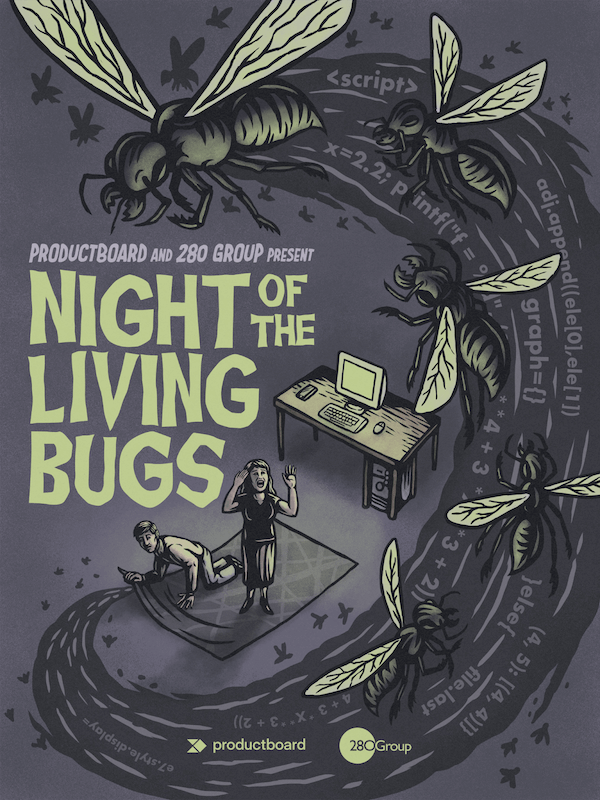
How to wake yourself up
When trying to squash bugs, it’s important to maintain a mindset of simplicity. Less is more, and simpler is better than complex — otherwise, bugs start getting built on top of bugs.
It’s important to accept that bugs are natural — account for them when you design processes. For example, you can develop and implement a test strategy that includes automated unit, integration, functional, performance, and stress testing. Similarly, you can shape your product backlog so it includes a healthy mix of bug fixes and technical debt resolution (consider the 30/30/30 rule).
If you’re on a team with a high degree of maturity and accountability, you can take a broken window approach. If engineers see something that’s small and broken as they’re working, they can fix it. And product managers can plan with their teams to allow time for these types of fixes.
The nightmare: Scrumzilla
When the scrum process takes over, everything becomes about “getting the process right” rather than delivering value. Scrumzilla destroys your carefully planned roadmap (and maybe your whole product roadmap process) and turns your product vision into a pile of smithereens.
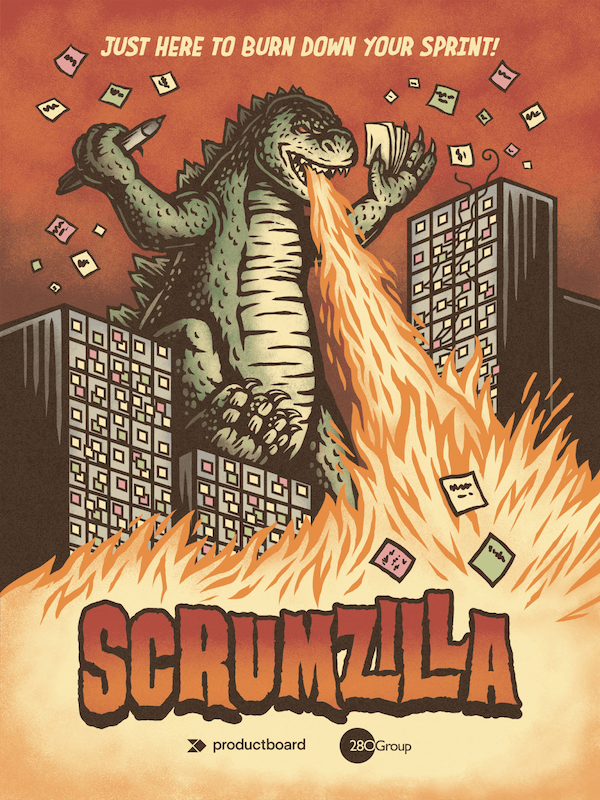
How to wake yourself up
Remember that scrum can be your friend, but it morphs into the Scrumzilla monster when you value the process above all else. Your ultimate goal is always to deliver customer value, not to “practice scrum perfectly.”
The key to keeping scrum in the friendzone? Be strategic about defining your overall product goals as well as goals for each sprint. Keep your team focused on customer value. Repeatedly bring conversations back to the who, what, and why of your product vision.
One of the best ways to keep customer value top of mind is to make sure you’re spending most of your time in the problem space. Regularly review your Productboard Insights board, where you can collect feedback from users and identify the key themes and problems you’re focused on solving. This helps you stay on top of what your customers really need and infuse their voice into every phase of the product lifecycle.
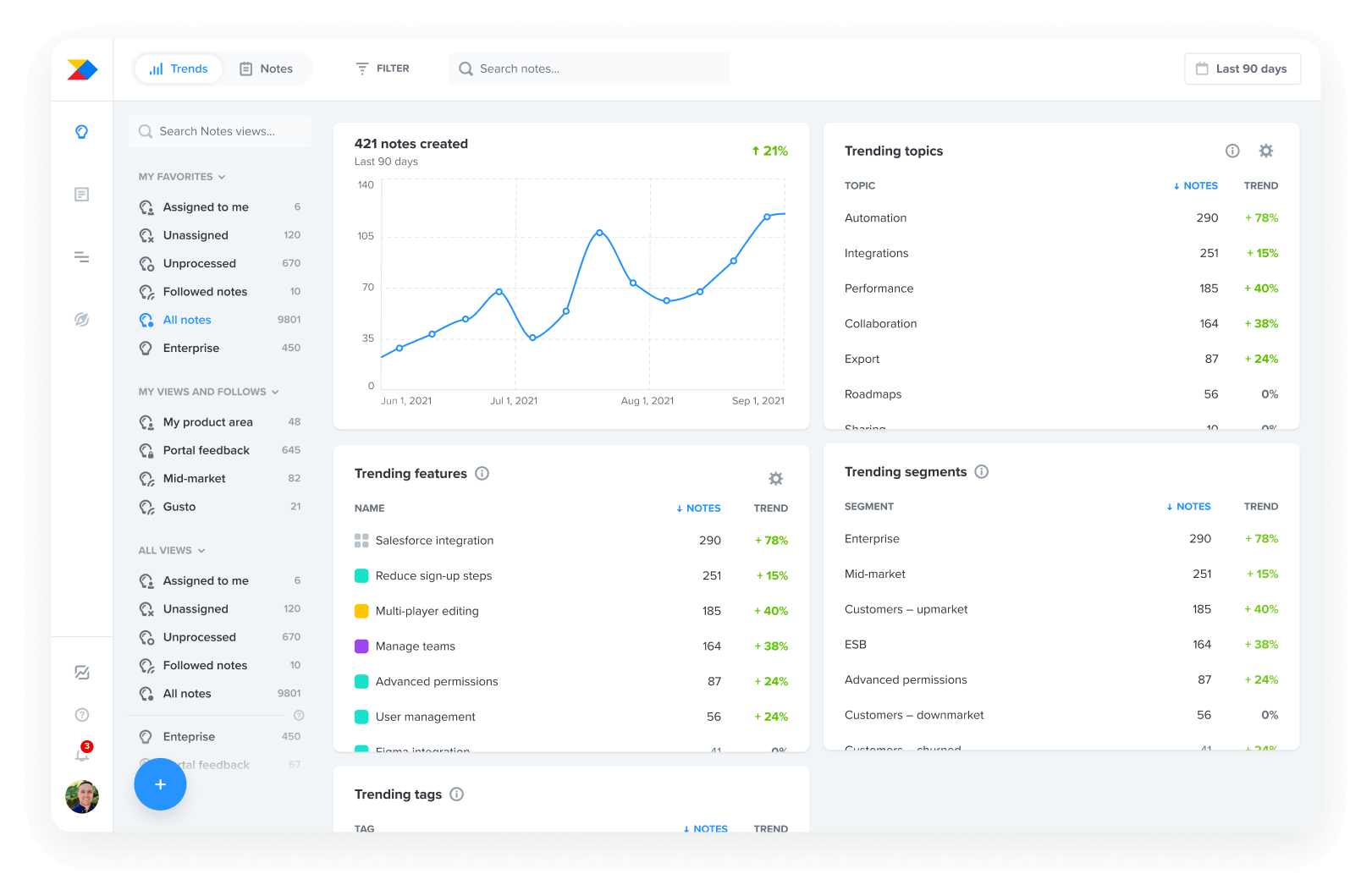 Productboard’s Insights Board allows you to consolidate all your product feedback in one place and prioritize product efforts based on real customer insights.
Productboard’s Insights Board allows you to consolidate all your product feedback in one place and prioritize product efforts based on real customer insights.
Nightmare: The Dangerous Animals of Product Management
Whether you’re dealing with the hungry HiPPO (Highest Paid-Person’s Opinion), the venomous CoBRA (Cognitive Bias-Related Assertions), the charging RHiNO (Really High-Value New Opportunity), or another Dangerous Animal of Product Management, these challenging stakeholders and situations can cause all kinds of problems when left to run wild.
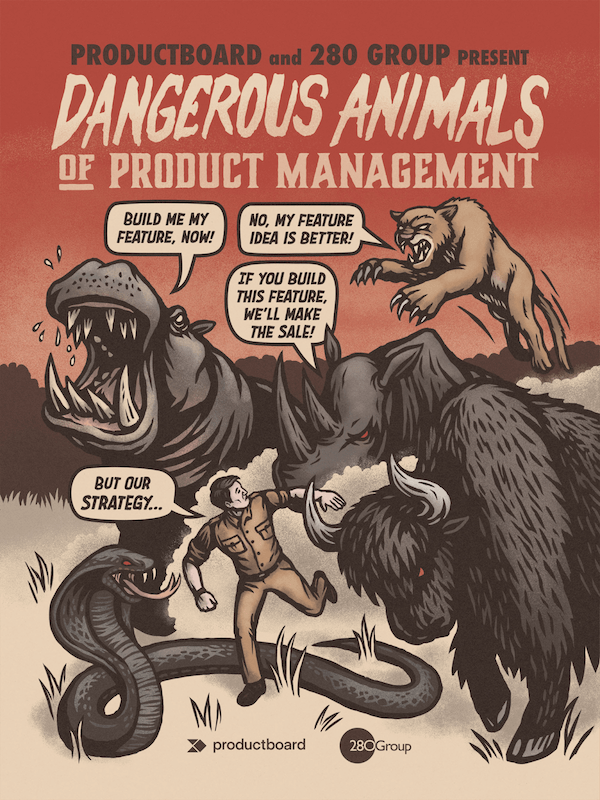
How to wake yourself up
Each animal in the menagerie requires its own set of tactics to be tamed. Many Dangerous Animals appear when there’s no clear product vision or strategy. With a tool like Productboard, you can invite stakeholders from across the organization to view or contribute to your product plans and create tailored roadmaps that meet the specific needs of each type of stakeholder. This gets everyone on the same page and showcases the “why” behind your product decisions.
Other Dangerous Animals like to pounce on shiny objects or hyper-focus on their favorite features or ideas. Instead of letting them swoop in and take over, put your users and customers front and center by regularly referring to the User Impact Score — an auto-calculated score that can help you surface your top-requested feature ideas — when evaluating ideas. This way, you’ll always stay focused on what’s most valuable to your target customer and your business.
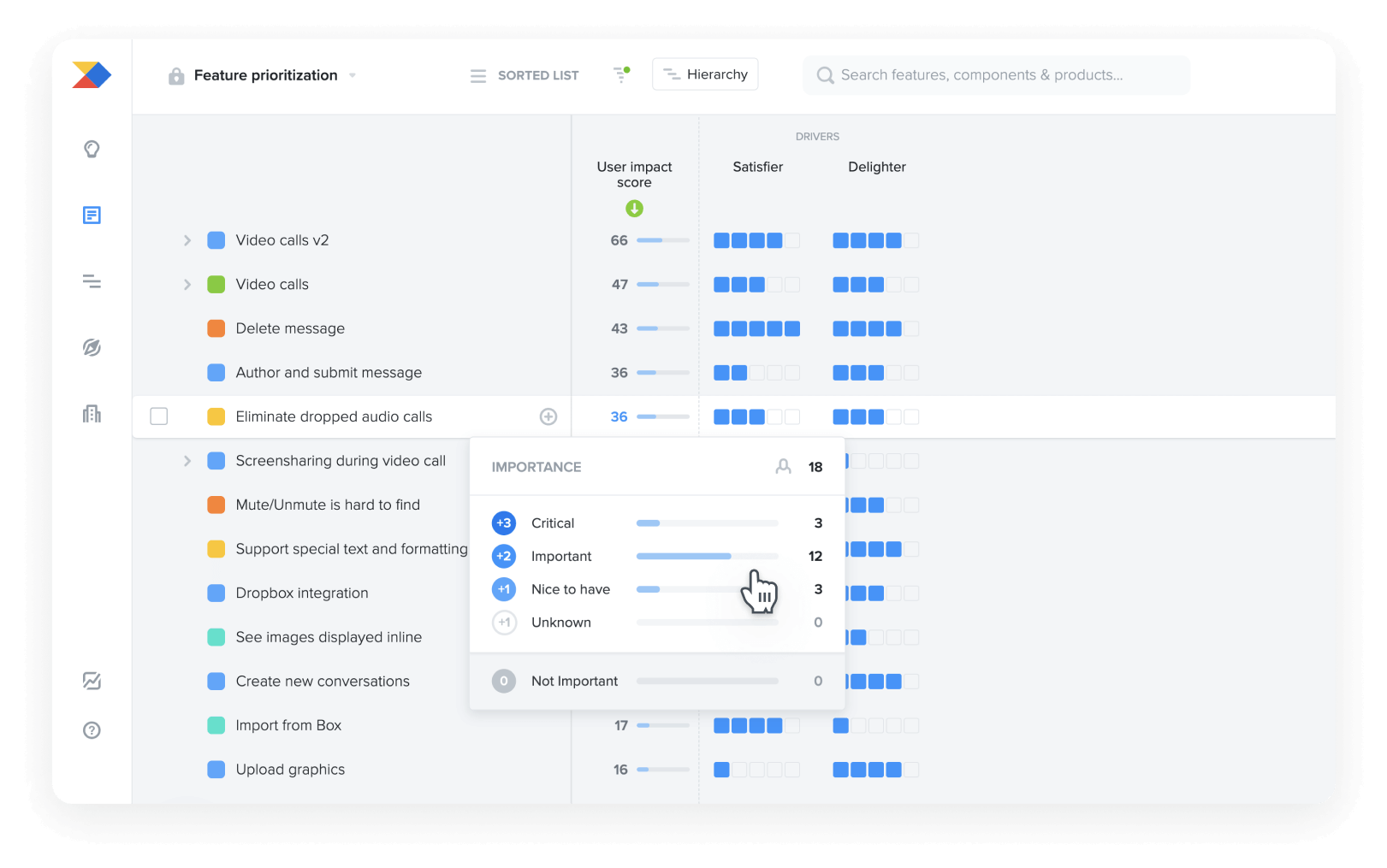 Sort feature ideas by the auto-calculated user impact score, which is based on actual user insights you’ve identified in feedback.
Sort feature ideas by the auto-calculated user impact score, which is based on actual user insights you’ve identified in feedback.
To get even more insights from your users and disarm the Dangerous Animals with data, you can use Productboard to see what matters most to your most important customer segments. User segments can be defined based on usage-based cohorts imported from product analytics solutions like Amplitude and Mixpanel, for example to see top-requested features of your power users or at-risk users. Company segments can be defined based on company attributes synced with Salesforce, or brought in from your CRM. That could help you see what really matters to your customers in the Aerospace industry, based in the U.S., with over 500 paid seats.
The nightmare: Frankensoft
Frankensoft is the hideous child of products and features that get mish-mashed together without any regard for strategy or user experience. Upon a retrospective, the beast realizes he is the opposite of a unified set of products and features — he is horrible! His existence can be attributed to random acquisitions, third parties, or siloed departments where different software gets bolted together.
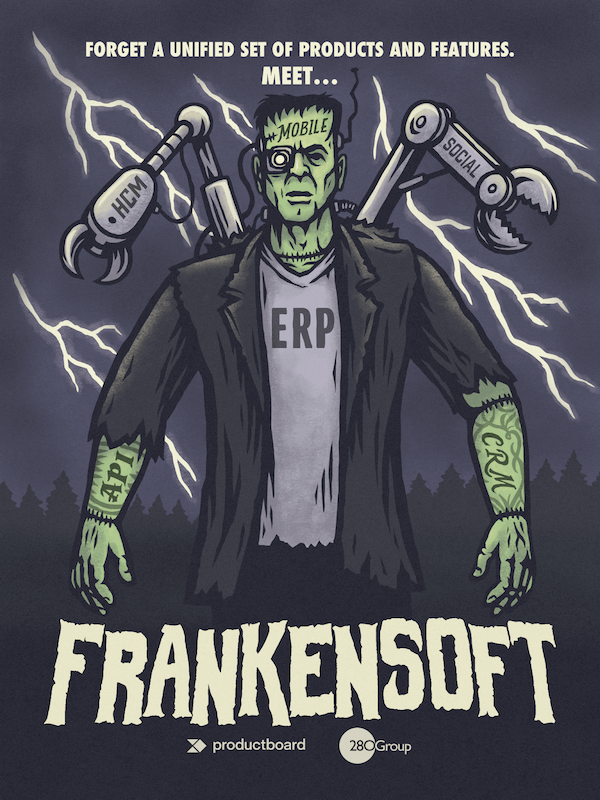
How to wake yourself up
You can avoid Frankensoft by always tying your work back to larger objectives and product strategies. When teams are united around a broad product vision and strategy, they’re more likely to develop a cohesive product that doesn’t just feel like a random collection of features and leaders will be empowered to sunset underperforming products and features.
Thinking strategically about your roadmap can help you avoid the awkwardness of a Frankensoft. Consider how you’ll create connections and continuity so all your different themes are intentionally tied together. Rather than thinking about your roadmap as a collection of features, focus on the outcomes you’ll be delivering. Embedding design with your teams can help you deliver consistent design language and user interface elements so the final product feels cohesive and not disjointed.
We hope you enjoyed our bedtime story!
In an ideal world, you’d never have to confront any product nightmares. But we all know they’re nearly impossible to avoid. Now you’ve got some tools and tactics to shed light on these fearsome creatures and send them scurrying away.
Sleep tight!
